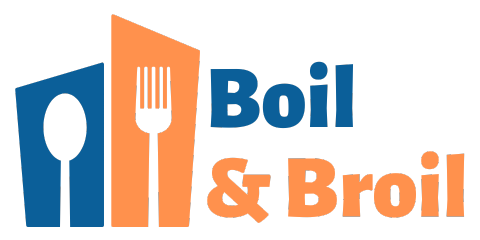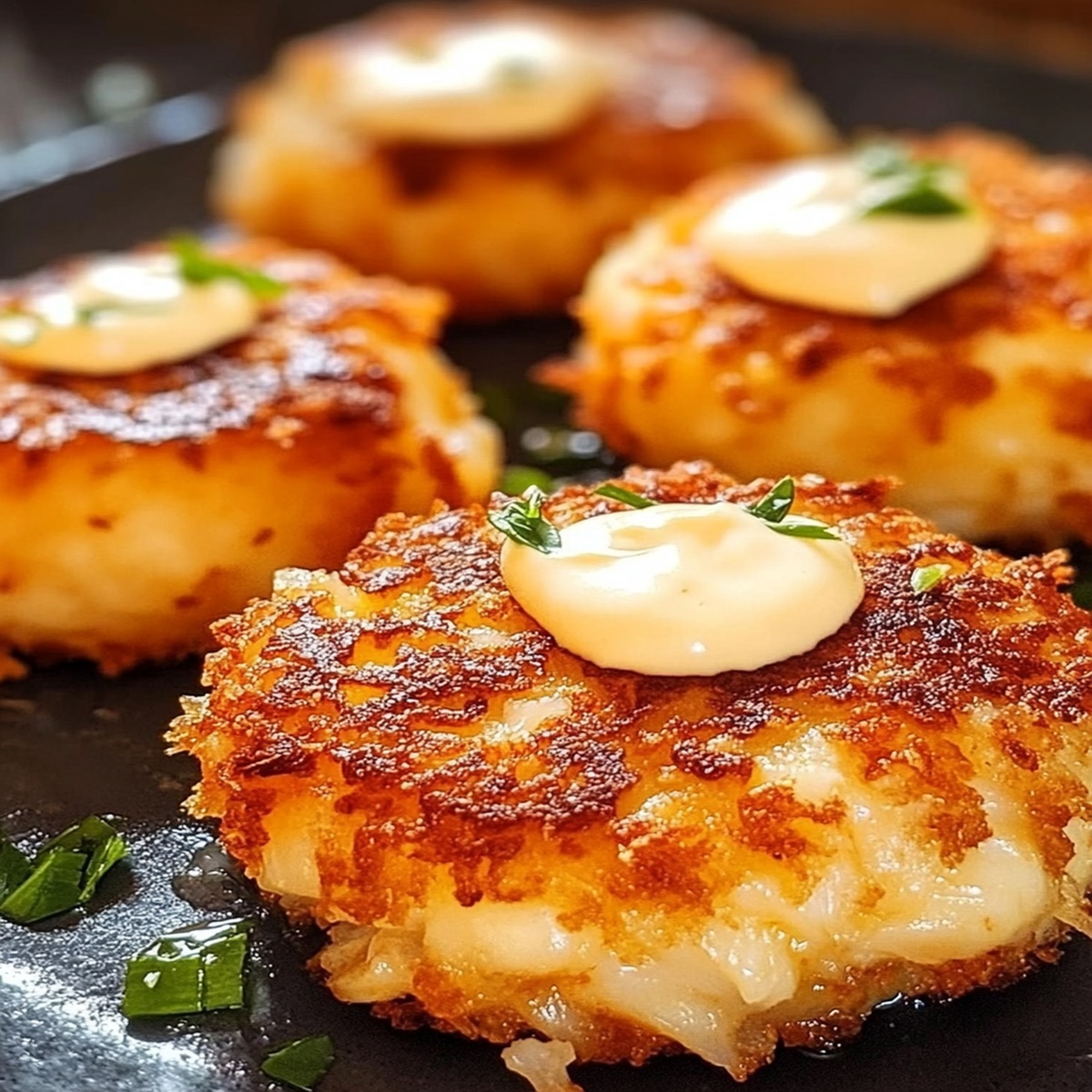Heavenly Baked Crab Cakes Recipe: Crispy Coastal Magic
Crunchy, golden-brown crab cakes have become my ultimate seafood passion on lazy summer evenings.
Maryland’s coastal cuisine inspires these delectable morsels with fresh, succulent ingredients.
Coastal kitchens often guard their secret recipes, but I’m sharing a simple, foolproof method.
Delicate crab meat combines beautifully with herbs and light seasonings to create an irresistible appetizer.
Crisp panko breadcrumbs guarantee a perfect exterior that cracks wonderfully when you bite into each cake.
Professional chefs might complicate things, but this recipe keeps preparation straightforward and enjoyable.
You’ll want to savor every single bite of these incredible crab cakes right off the baking sheet.
Why These Baked Crab Cakes Burst with Flavor
The Essentials for Tasty Baked Crab Cakes
Main Ingredients:Seasoning and Flavor Enhancers:Preparation Essentials:Making Baked Crab Cakes at Home, Step by Step
Step 1: Prepare the Oven for Deliciousness
Fire up your oven to 375°F (190°C) and line a baking sheet with parchment paper.
This sets the stage for crispy, golden perfection.
Step 2: Mix the Flavor Powerhouse
Grab a large mixing bowl and gently combine your ingredients:Fold these ingredients together with a light touch, keeping those beautiful crab chunks intact.
Overmixing is the enemy of tender crab cakes!
Step 3: Shape Your Culinary Masterpiece
Craft the mixture into patties, making them about an inch thick.
Arrange these flavor bombs carefully on your prepared baking sheet.
Step 4: Bake to Golden Perfection
Slide the baking sheet into the oven and let the magic happen.
Bake for 25-30 minutes until the tops turn a gorgeous golden brown.
Step 5: Unlock the Crispy Crunch
For those who crave extra crispiness, switch to broil.
Give the crab cakes 2 minutes under the broiler, but keep a hawk-eye watch to prevent burning.
Step 6: Serve and Savor
Let the crab cakes cool for a moment.
Plate them up with your favorite dipping sauce and get ready for a flavor explosion that’ll make your taste buds dance!
Baked Crab Cakes: Expert Tips for Flaky Perfection
How to Store and Reheat Crab Cakes and Keep Them Crisp
Pairing Ideas for Baked Crab Cakes and More
Elevate Crab Cake Dining Experience:Baked Crab Cake Upgrades—Try These New Flavors
FAQs
Use fresh lump crab meat and avoid overmixing. Gently fold ingredients together and chill the mixture for 30 minutes before forming patties helps them hold their shape during baking.
Yes, you can substitute traditional breadcrumbs with panko for extra crispiness or gluten-free breadcrumbs if needed. Each type will slightly change the texture but work well in the recipe.
Create a substitute by mixing paprika, celery salt, black pepper, and a pinch of cayenne. This blend will provide a similar flavor profile to Old Bay and work perfectly in crab cakes.
Fresh crab meat should have a mild ocean smell, look moist but not watery, and have a bright white or light pink color. Avoid any meat with a strong fishy odor or discoloration.
Print
Baked Crab Cakes Recipe
- Total Time: 45 minutes
- Yield: 4 1x
Description
Maryland-style crab cakes deliver coastal comfort with golden-brown perfection and delicate seafood flavors. Crisp exterior and tender interior promise a delightful culinary experience you’ll savor with each delectable bite.
Ingredients
Main Protein:
- 1 pound (454 grams) fresh lump crab meat
Binding and Flavoring Ingredients:
- 2 large eggs
- 1/2 cup (120 milliliters) mayonnaise
- 2 tablespoons Dijon mustard
- 2 tablespoons freshly squeezed lemon juice
- 1 tablespoon Old Bay seasoning
Coating and Texture Ingredients:
- 1 cup (240 milliliters) plain or panko breadcrumbs
Instructions
- Preheat the oven to 375F (190C) and prepare a baking sheet with parchment paper for optimal non-stick performance.
- Combine crab meat with breadcrumbs, mayonnaise, Dijon mustard, Old Bay seasoning, lemon juice, and eggs in a spacious mixing bowl, using a delicate folding technique to maintain substantial crab chunks.
- Craft uniform patties approximately 1 inch thick, ensuring consistent shape and even cooking potential.
- Arrange the crab cake patties strategically on the parchment-lined baking sheet, allowing slight separation between each cake.
- Transfer the baking sheet to the preheated oven and bake for 25-30 minutes, monitoring the surface until it transforms into a rich, golden-brown complexion.
- For enthusiasts seeking an extra crispy exterior, activate the broiler and expose the cakes for a precise 2-minute interval, vigilantly preventing scorching.
- Remove from oven and allow the crab cakes to rest momentarily, enabling structural stabilization and temperature moderation.
- Plate with complementary sauce options, presenting a visually appealing and tantalizing seafood delicacy.
Notes
- Handle crab meat delicately to maintain its tender, delectable texture and prevent breaking the delicate chunks during mixing.
- Opt for fresh lump crab meat for superior flavor and luxurious mouthfeel compared to canned alternatives.
- Consider gluten-free breadcrumbs or almond flour for a low-carb adaptation that keeps the crispy exterior intact.
- Use minimal binding ingredients to ensure the crab remains the star of this seafood sensation, letting its natural sweetness shine through.
- Prep Time: 15 minutes
- Cook Time: 30 minutes
- Category: Appetizer, Dinner
- Method: Baking
- Cuisine: American
Nutrition
- Serving Size: 4
- Calories: 350
- Sugar: 1 g
- Sodium: 600 mg
- Fat: 20 g
- Saturated Fat: 3 g
- Unsaturated Fat: 15 g
- Trans Fat: 0 g
- Carbohydrates: 20 g
- Fiber: 1 g
- Protein: 22 g
- Cholesterol: 150 mg


Jack Sullivan
Founder & Culinary Storyteller
Expertise
Single-recipe development with a narrative approach, Culinary storytelling and food history, Seasonal and regional ingredient utilization, Home cooking techniques adapted for modern kitchens
Education
New England Culinary Institute (Montpelier, VT)
Certificate in Culinary Arts
Focused on farm-to-table cooking, sustainable practices, and modern plating techniques.
Asheville-Buncombe Technical Community College
Associate Degree in Culinary Arts
Emphasized Southern Appalachian cuisine and local ingredient sourcing.
Jack grew up surrounded by smoky skillets and handwritten recipes in the mountains of North Carolina. His roots in Appalachian cooking shaped the way he sees food – as something that connects people, tells a story, and holds meaning.
With hands-on training and a background in sustainable, regional cooking, Jack started Boil And Broil to make meaningful meals more accessible. He’s all about one-dish recipes that are simple to follow but rich with flavor and history.